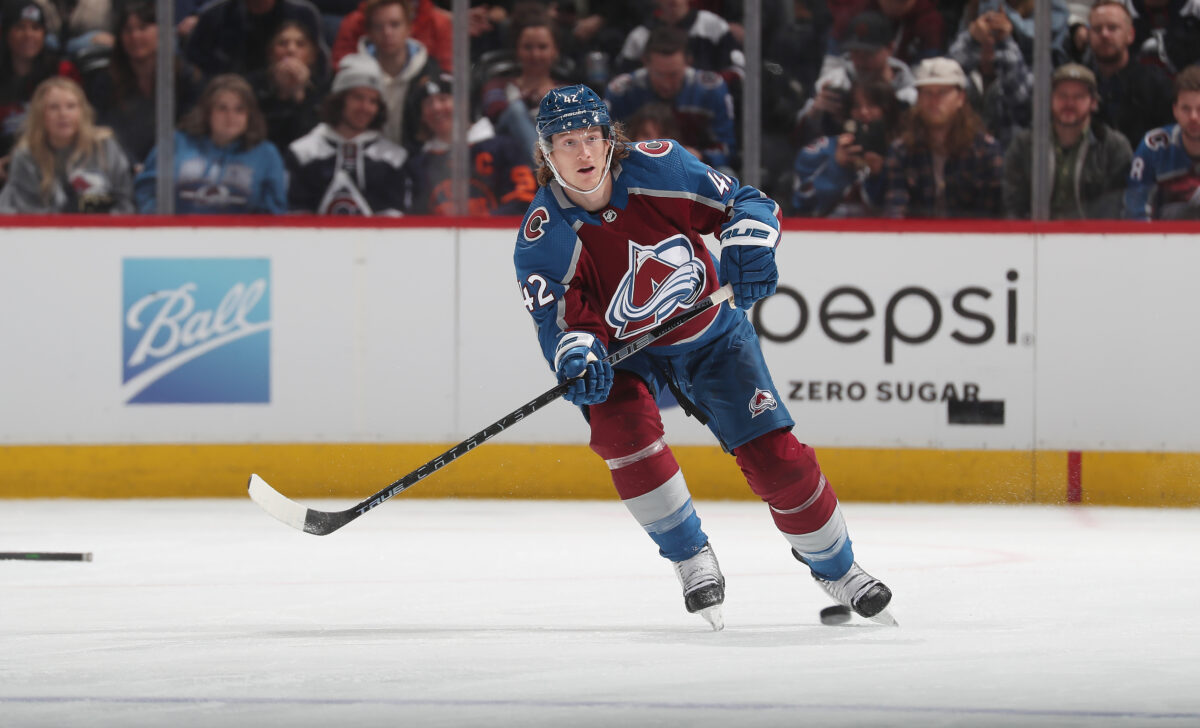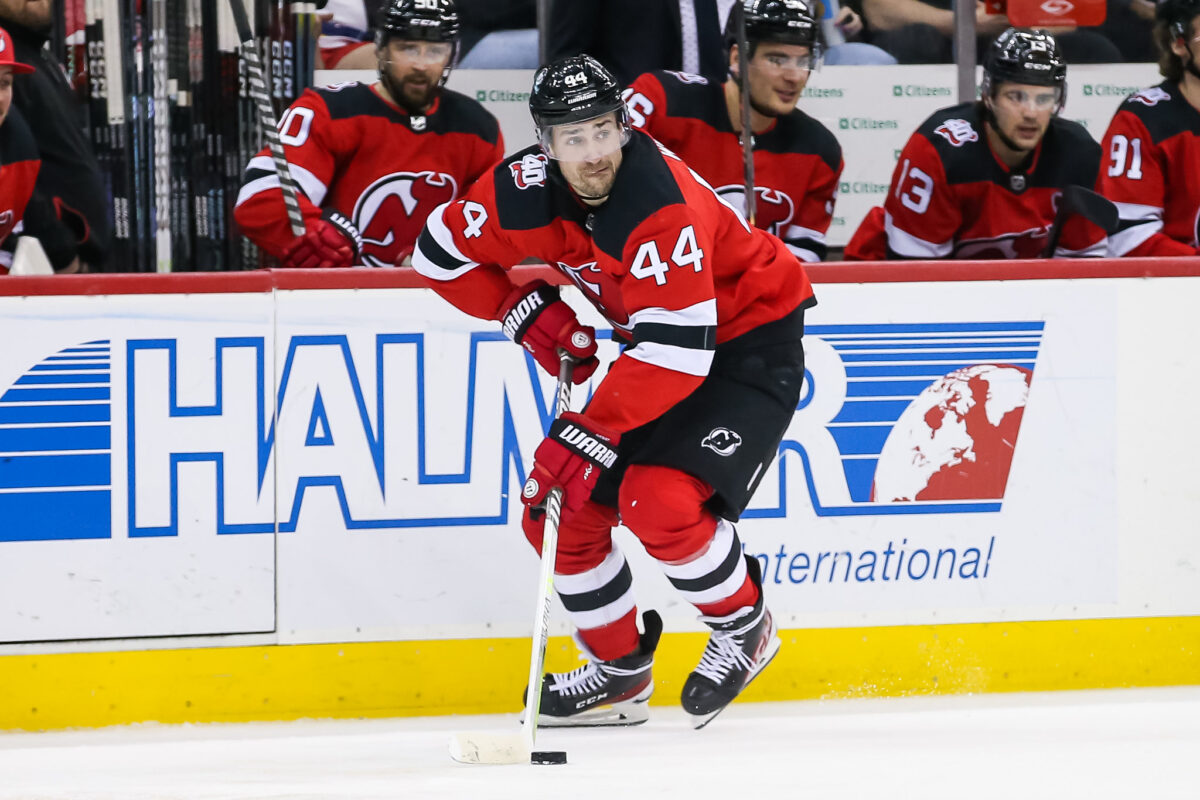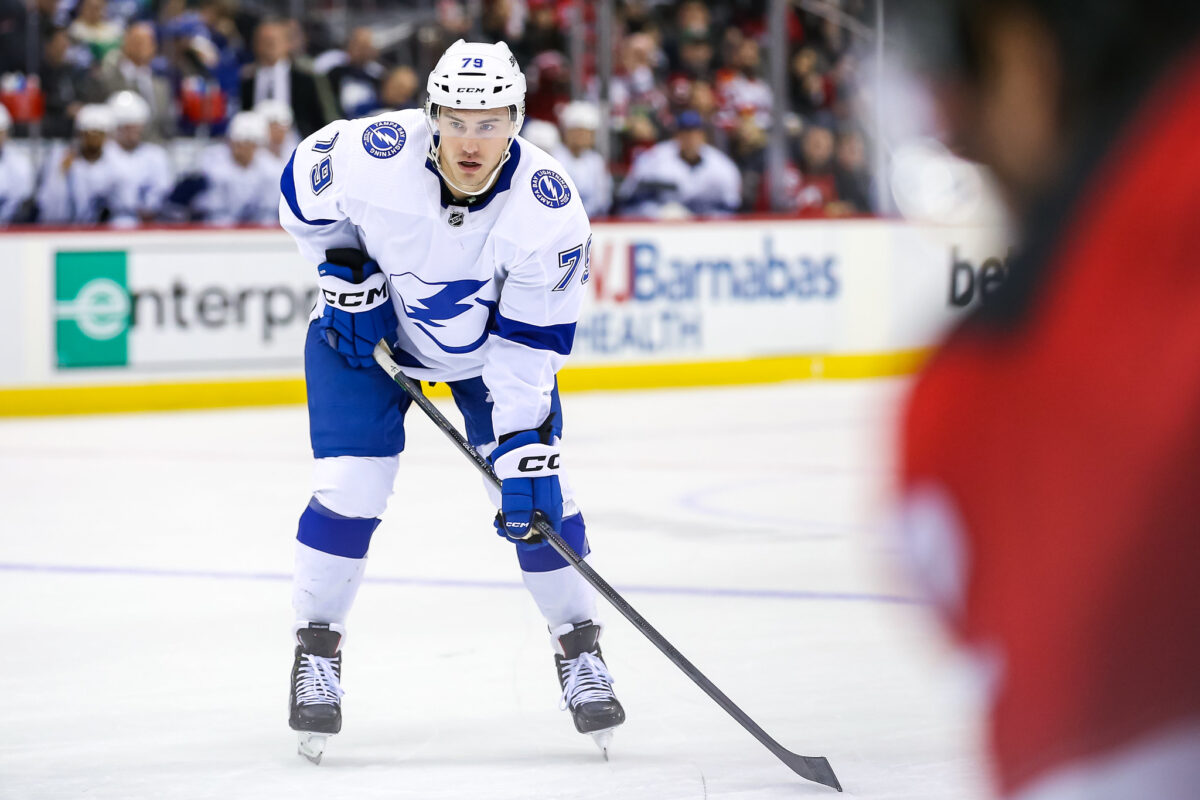I recently highlighted three of the best contracts that the Colorado Avalanche have on the books for the 2023-24 season, meaning it’s time to turn our gaze toward the worst contracts on the organization’s payroll. It’s a testament to the work done by the front office headed by Joe Sakic (president of hockey operations) and Chris MacFarland (general manager) that this list does not include many – if any – truly unsavoury contracts.
Each of the three players are effective and serviceable NHL players in their own right, but are paid slightly more than what they provide in on-ice value. Carrying such contracts is not a death knell for the organization, but it could hamper their ability to surround their superstar core with a strong supporting cast in the future. It’s also important to note that “worst” is a subjective term and that these pacts aren’t necessarily terrible – just underwhelming.
With that, let’s dive into the Avalanche’s three worst contracts heading into the 2023-24 season, and project how these deals might age through this season and beyond.
Josh Manson, Defenseman
Remaining contract: Three years, $4.5 million average annual value (AAV)
There’s no doubt that adding Josh Manson at the 2022 NHL Trade Deadline offered the Avalanche a physical presence on their mobile, puck-moving blue line and buoyed the team to a Stanley Cup win later that spring. Yet, his age (32 in October), mounting health concerns, and recent string of sub-par play have tipped his contract into worrisome territory.
Manson struggled mightily to stay healthy during the 2022-23 season, including an extended stretch where he missed 31 straight games between December and February. As a result, he was limited to appearing in only 32 of the Avalanche’s 89 total regular-season and playoff games and recently had a procedure done following the team’s first-round elimination at the hands of the Seattle Kraken.

Manson ranked fifth among Avalanche defensemen in average ice time (17:11 per game) during the regular season but dropped to seventh in the postseason (11:47), despite being Colorado’s third-highest-paid blueliner.
One aspect of Manson’s play that should cause concern is his penalty differential. Though he’s always played on the edge (he has 17 fewer penalty minutes than career games played), he’s become even more of a negative in that regard. Despite only playing in 27 regular-season games last year, Manson owned a minus-8 penalty differntial, only drawing eight minor penalties while taking 16. Since the 2020-21 season, he’s taken 52 minor penalties while only drawing 20, with his minus-32 differential in that span ranking in the bottom-20 of all NHL defensemen.
As recent history has demonstrated, no contract is untradeable. However, it might be difficult to find a taker for Manson if he doesn’t prove he can stay healthy and hasn’t lost a step in his own zone. Assuming that Devon Toews, Mikko Rantanen, and Bowen Byram are eventually signed to lucrative contract extensions, Manson may be the sacrificial lamb to make the numbers work.
Miles Wood, Forward
Remaining contract: Six years, $2.5 million AAV
On its face, claiming that a $2.5 million AAV is one of a team’s worst contracts is laughable. Miles Wood – signed as an unrestricted free agent this summer – tallied 13 goals and 27 points in 76 games last season, one year removed from appearing in only three games all year. Under $3 million for a physical, energetic forechecker capable of chipping in with some offense seems like a fair deal, but there are several concerns underlining his signing.

What drags Wood into this discussion is the term attached to his contract. A lengthy six-year pact that goes through the 2028-29 season at which point he will be 33, the veteran winger’s deal also carries a modified no-trade clause in the final five years of the agreement.
Beyond committing term to a player fitting an archetype that hasn’t aged well in the past, handing out no-trade clauses to non-stars is a proven recipe for disaster. It’s true that Wood’s clause will only allow him to block a move to six teams, so it’s not a massive obstacle in a potential severance, but it’s another strike against his contract.
You may also like:
- Avalanche Can Win 2025 Stanley Cup with New Goalie Tandem
- 3 Takeaways From the Avalanche’s 3-1 Loss to the Canucks
- Sherwood’s First-Career Hat Trick Leads Canucks to 3-1 Win Over Avalanche
- Projected Lineups for the Avalanche vs Canucks – 12/16/24
- Nathan MacKinnon Passes Michel Goulet for 3rd-Most Points in Avalanche History
All things considered, the relatively low AAV in a rising cap landscape keeps this from being a bad contract and the team should feel fortunate that this is one of their least palatable deals. Still, it’s certainly not a good one and could come to be a net-negative before long.
Ross Colton, Forward
Remaining contract: Four years, $4 million AAV
You can see that I’m scraping the bottom of the barrel when Ross Colton‘s newly-inked four-year, $16 million contract is labeled one of the Avalanche’s worst deals, the second contract on this list that was signed this past offseason. The latest in a long line of Tampa Bay Lightning cap casualties, the Avalanche acquired the 26-year-old for a paltry sum of a few draft picks and signed him to a deal that is betting he can flourish in an elevated role in the lineup.

In the Avalanche’s defence, Colton has been one of the NHL’s most efficient scorers at 5-on-5 since making his debut during the 2020-21 season. Among forwards to have played at least 300 minutes at 5-on-5 in that time, he ranks 27th in goals per-60-minutes, 127th in points per-60, and 28th in high-danger scoring chances. Those absurd rates of production are a result of playing just under 11 minutes per game at 5-on-5, ranking 409th over the past three seasons.
Colton’s depth scoring allowed the Lightning to feast on their opponents while their stars sat on the bench. He contributed nine goals in 46 playoff games as the franchise reached the 2021 and 2022 Stanley Cup Final, emerging victorious in the first of those two appearances.
There’s always the risk that players like Colton have benefited from playing on an elite team and against weaker competition, and that their production is inflated as a result. There is no guarantee that his production will translate even with increased usage or better linemates.
If Colton continues to score at a similar rate with scaled-up usage, a $4 million AAV for a top-six goalscorer through his prime years will be seen as a bargain. If not, his contract could end up burning a hole in the Avalanche’s proverbial pocket.
Avalanche Still Facing Healthy Cap Situation
It speaks volumes that despite being considered the worst contracts on the team, the designation is relative to the rest of the Avalanche’s cap sheet. A vast majority of players are either signed to a discount compared to their market value or are compensated in line with what they would likely command in free agency.
Each of the NHL’s 32 franchises can count at least one regrettable contract on their cap sheet. In the modern cap world, achieving on-ice success is largely a matter of limiting those mistakes as much as possible. The Avalanche have managed their salary commitments effectively to date, and should continue to do so as long as this front office group is in charge.
Data courtesy of CapFriendly, Evolving Hockey, Natural Stat Trick, and the NHL.
